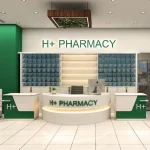In the dynamic world of retail marketing, two powerful tools have emerged as game-changers: Point-of-Purchase (POP) and Point-of-Sale (POS) displays. These strategic marketing assets are designed to captivate consumers, influence purchasing decisions, and ultimately drive sales. As we embark on this comprehensive guide, we’ll delve into the intricacies of POP and POS displays, exploring their definitions, benefits, key differences, and practical applications.
What are POP Displays
Point-of-Purchase (POP) displays are visually striking promotional materials strategically placed within a retail environment to draw attention to specific products or brands. These displays are meticulously crafted to entice customers and encourage impulse purchases at the very moment they are making buying decisions. POP displays can take various forms, including floor stands, counter displays, end-caps, and hanging banners, all designed to create a lasting impression and influence consumer behavior.
What are POS Displays
Point-of-Sale (POS) displays, on the other hand, are marketing tools positioned at the checkout area, where customers finalize their transactions. These displays aim to capture the attention of shoppers during the critical last moments before making a purchase. POS displays can range from eye-catching signage and product showcases to strategically placed impulse-buy items, all designed to encourage add-on sales and maximize revenue.
Benefits of POP displays
- Increased Brand Visibility: POP displays are powerful attention-grabbers that elevate brand visibility within the retail environment. By strategically placing these displays throughout the store, brands can effectively communicate their messaging and stand out amidst the competition.
- Product Differentiation: Well-designed POP displays can effectively differentiate products from competitors’ offerings, highlighting unique features, benefits, and value propositions. This differentiation can significantly influence consumer choice and drive sales.
- Impulse Purchases: POP displays are masters at triggering impulse purchases. By strategically positioning products and creating an irresistible visual appeal, these displays can entice customers to make unplanned purchases, boosting overall sales and revenue.
Benefits of POS displays
- Last-Minute Influence: POS displays have the unique advantage of influencing customers during the final stages of the buying process. By capturing their attention at the checkout, these displays can persuade shoppers to make additional purchases or consider complementary products.
- Cross-Selling and Upselling: POS displays excel at cross-selling and upselling opportunities. By showcasing related or higher-value products, retailers can encourage customers to spend more and increase the average transaction value.
- Brand Reinforcement: POS displays serve as a final touchpoint for brand reinforcement. By prominently displaying brand logos and messaging, retailers can leave a lasting impression on customers, fostering brand loyalty and recall.
POP vs POS displays: Key differences and similarities
While POP and POS displays share the common goal of influencing consumer behavior and driving sales, they differ in their strategic placement and targeted audience. Here are some key differences and similarities:
Differences:
- Placement: POP displays are strategically positioned throughout the retail environment, while POS displays are located at the checkout area.
- Timing: POP displays influence customers during their shopping journey, while POS displays target customers at the final stage of the purchase process.
- Purpose: POP displays primarily aim to drive impulse purchases and increase brand visibility, while POS displays focus on cross-selling, upselling, and last-minute influence.
Similarities:
- Visual Appeal: Both POP and POS displays rely on captivating visuals, eye-catching designs, and strategic messaging to attract customer attention and influence purchasing decisions.
- Product Promotion: Whether positioned throughout the store or at the checkout, both display types promote specific products, brands, or offers to customers.
- Sales Boosting: Ultimately, both POP and POS displays are designed to enhance the shopping experience and drive increased sales for retailers.
Factors to consider when choosing between POP and POS displays
When deciding between POP and POS displays, several factors should be taken into consideration:
- Product Type: The nature of the product being promoted can influence the choice between POP and POS displays. Impulse-driven products may benefit more from strategically placed POP displays, while complementary or add-on items may be better suited for POS displays.
- Budget: POP displays tend to be more expensive due to their larger size and more extensive placement throughout the store. POS displays, while still requiring investment, may be a more cost-effective option for smaller brands or limited budgets.
- Retail Environment: The layout, foot traffic patterns, and overall ambiance of the retail space should be carefully evaluated. POP displays may be more effective in larger stores with ample space for strategic placement, while POS displays can be advantageous in smaller retail settings with limited floor space.
- Marketing Objectives: Clearly define your marketing objectives, whether it’s increasing brand awareness, driving impulse purchases, or maximizing cross-selling opportunities. This will help determine the most suitable display type to achieve your goals.
Best practices for designing and implementing POP and POS displays
To maximize the impact and effectiveness of POP and POS displays, it’s crucial to follow industry best practices:
- Eye-Catching Design: Invest in professional design services to create visually stunning displays that immediately capture customer attention. Incorporate vibrant colors, compelling graphics, and clear messaging to stand out in a crowded retail environment.
- Strategic Placement: Carefully consider the placement of POP and POS displays. For POP displays, prioritize high-traffic areas, end-caps, and strategic locations along the customer’s shopping journey. For POS displays, ensure they are prominently positioned at the checkout area for maximum visibility.
- Product Accessibility: Make sure the displayed products are easily accessible to customers. POP displays should allow for easy product interaction and examination, while POS displays should be within reach for convenient impulse purchases.
- Consistent Branding: Maintain consistent branding across all POP and POS displays to reinforce brand recognition and create a cohesive marketing campaign. Utilize brand colors, logos, and messaging to strengthen brand recall.
- Regular Monitoring and Maintenance: Regularly monitor the condition and effectiveness of your displays. Replace damaged or outdated materials promptly, and adjust placement as needed to ensure maximum impact.
Case studies: Successful POP and POS display campaigns
To illustrate the power of POP and POS displays, let’s explore two successful campaigns:
POP Display Campaign: Coca-Cola
Coca-Cola, the iconic beverage brand, has long been a master of POP displays. One standout campaign involved the creation of eye-catching floor stands featuring larger-than-life Coca-Cola bottles. These displays were strategically placed in high-traffic areas of grocery stores, capturing the attention of shoppers and prompting impulse purchases. The vibrant red color, recognizable branding, and creative design made these POP displays hard to miss, effectively increasing brand visibility and driving sales.
POS Display Campaign: M&M’s
M&M’s, the beloved candy brand, implemented a clever POS display strategy to boost impulse purchases. At checkout counters, they placed clear acrylic containers filled with colorful M&M’s candies, accompanied by eye-catching signage and promotional offers. The vibrant colors and appealing visuals made it nearly impossible for customers to resist the temptation of adding these treats to their purchases. This simple yet effective POS display campaign not only increased sales but also reinforced brand recognition and loyalty.
Future trends in POP and POS displays
As technology continues to evolve, the world of POP and POS displays is poised for exciting advancements:
- Interactive Displays: The integration of interactive elements, such as touchscreens, augmented reality (AR), and virtual reality (VR), will revolutionize the way consumers engage with displays. These immersive experiences will not only captivate audiences but also provide valuable data insights for retailers.
- Personalization and Targeted Marketing: With the rise of data analytics and customer tracking technologies, POP and POS displays will become increasingly personalized. Retailers will be able to tailor displays to individual customer preferences, delivering highly relevant and targeted marketing messages.
- Sustainable and Eco-Friendly Materials: As environmental consciousness grows, the demand for sustainable and eco-friendly display materials will increase. Retailers will prioritize the use of recyclable, biodegradable, and renewable materials, aligning their marketing efforts with their commitment to sustainability.
- Integration with Mobile and Digital Platforms: POP and POS displays will seamlessly integrate with mobile and digital platforms, enabling customers to access additional product information, promotional offers, and even make purchases directly from the displays using their smartphones or other digital devices.
Conclusion
In the ever-evolving landscape of retail marketing, POP and POS displays have proven to be invaluable assets for capturing customer attention, influencing purchasing decisions, and driving sales. Whether strategically placed throughout the store or positioned at the checkout area, these displays offer unique opportunities to connect with consumers, promote products, and reinforce brand messaging.
By understanding the key differences and similarities between POP and POS displays, as well as considering factors such as product type, budget, retail environment, and marketing objectives, retailers can make informed decisions and implement effective display strategies.
More Posts:
10 Retail Store Fixture Suppliers in USA
10 Top Acrylic Display Suppliers in the UK
Types of Window Displays – Ultimate Guide





